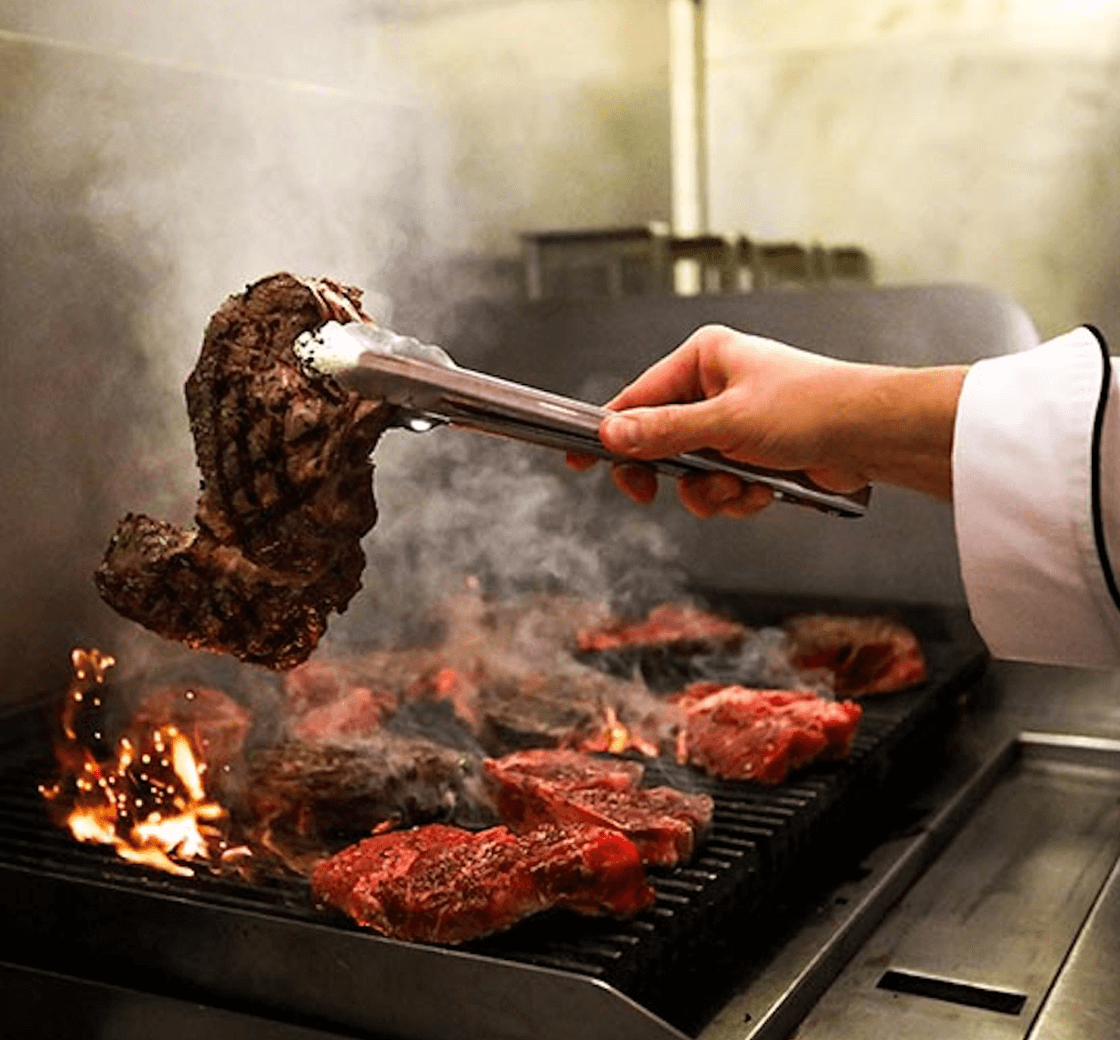
Grilling is one of the best ways to cook food simply while obtaining a maximum amount of flavor. You can grill on the stovetop, in your backyard, or over charcoal or gas. In this class you will learn how to modify your grilling technique depending on the medium used. You will also discuss how dry rubs and sauces are used on the grill, then put those lessons to use as you make: grilled steaks; shrimp skewers; chicken satay with peanut dipping sauce and grilled portobello mushrooms and zucchini.

You will work in teams to execute the class menu. At the end of class, participants gather to enjoy the food they have prepared. Wine is served with meals in most classes. All class menus are subject to change. While a snack platter is offered in both morning and evening classes, you may want to consider a light snack before joining us for class. Students are encouraged to bring a light lunch or dinner to all pastry classes.

You will work in teams to execute the class menu. At the end of class, participants gather to enjoy the food they have prepared. Wine is served with meals in most classes. All class menus are subject to change. While a snack platter is offered in both morning and evening classes, you may want to consider a light snack before joining us for class. Students are encouraged to bring a light lunch or dinner to all pastry classes.
Chef Herve Mallivert takes you on a “voyage gastronomique” in this hands-on class highlighting the splendor of seafood. Your journey starts with a brief outline of the sea’s abundance, followed by a focus on flavor, advanced techniques, and the uniquely high quality seafood of the Northeastern coast. You will then transform one of the most iconic dishes from the Northeast – the lobster roll! – preparing it in brioche with avocado pudding, shellfish and horseradish cream, coriander salt, and seaweed chips. Next is monkfish (a Chef Herve favorite) cooked slowly sous vide and served with lobster dashi consommé, polenta cream, and fried monkfish bites.
In this course, you'll learn the techniques to prepare four simple and delicious seafood dishes. The chef instructor will share tips and tricks for selecting the best seafood, and you'll sit down to your completed menu of: refreshing shrimp salad with herbal vinaigrette; Thai curry mussels; fish tacos; steamed fish en papillote with vegetable ribbons, citrus and herbs.
There's nothing like handmade pasta's flavor and texture, and in this class, we'll have a blast leaning how to make fresh handmade pasta, stuffed pasta, perfect sauces and all the accompaniments! There's nothing like handmade pasta's flavor and texture. Together, we'll learn to make dough the Old World way, then how to shape, cut and stuff it. You and your partner will create a complete fresh Italian dinner of: pappardelle with Bolognese; burro e salvia (butternut squash ravioli with sage butter).
The farms, orchards and of course vineyards of California's wine country combine to turn the region into one of the most bountiful in the U.S. The kitchens of Napa, Sonoma and the Russian River Valley highlight the quality of the ingredients at hand. Learn to make some of those dishes in your own kitchen, including: fig salad with sweet-spiced walnuts, Gorgonzola and Champagne vinaigrette; pork tenderloin with pan-roasted grapes; scallops with pan-roasted grapes and sauvignon blanc; and warm Dijon potatoes with fresh herbs and peas. You will enjoy these with a selection of California wines.
Ranked as America’s Best Culinary School (USAToday 2019), our roster of Chef-Instructors have run top kitchens around the globe.
| (Separate multiple addresses with commas like: john@aol.com, jane@aol.com) | |